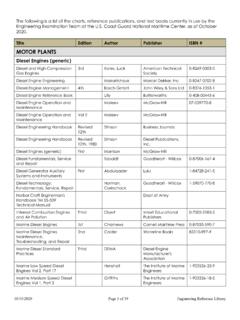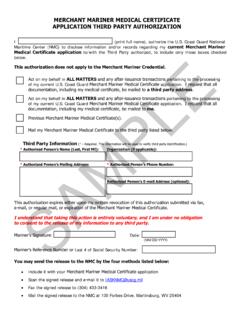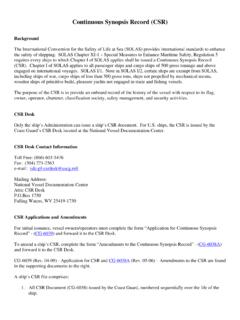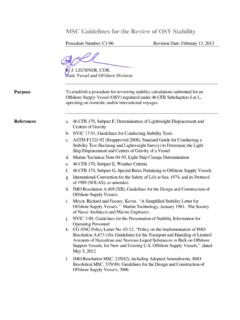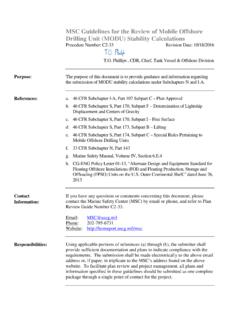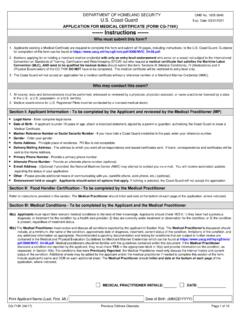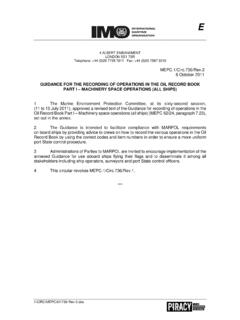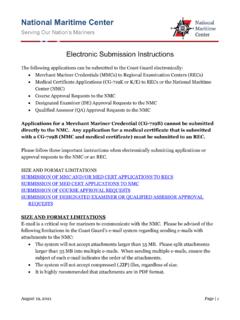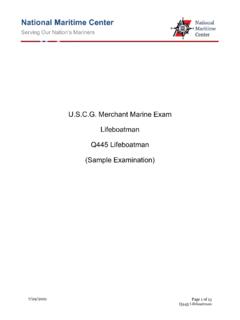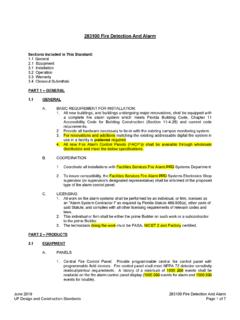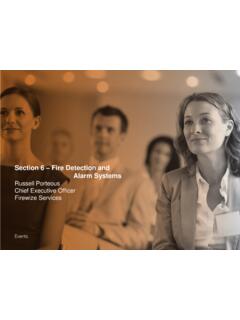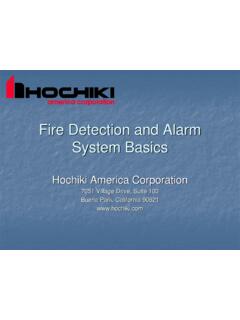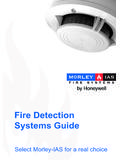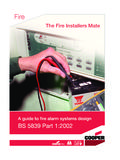Transcription of MSC Guidelines for Fire Detection Systems - dco.uscg.mil
1 MSC Guidelines for fire Detection Systems Procedure Number: E2-09 Revision Date: 6/11/2014 Coast Guard Marine Safety Center 1 P. W. Gooding, CDR, Engineering Division, Chief a) Title 46 CFR (Subchapter H) b) Title 46 CFR (Subchapter J) c) Title 46 CFR (Subchapter K) d) Title 46 CFR (Subchapter L) e) Title 46 CFR (Subchapter Q) f) NFPA 72 g) Navigation and Inspection Circular (NVIC) 7-80, Use of fire Detection Systems Which are Not Approved Under 46 CFR h) Safety Of Life at Sea (SOLAS), Consolidated Edition, 2004, Chapter II-2 _____ If there are questions or comments concerning this document, please contact the Marine Safety Center by e-mail or phone, and refer to Procedure Number: E2-09. E-mail: Phone: 703-872-6732 Website: Using applicable portions of references (a) through (i), the submitter shall provide sufficient documentation and plans to support fire Detection system review.
2 If the submission is mailed to MSC than all plans shall be made in triplicate. To facilitate plan review and project management, all plans and information specified in this guideline should be submitted as one complete package through a single point of contact for the project. Note: For Subchapter K and T vessel fire Detection Systems , see Plan Review Guideline E2-23, Electrical Plans Small Passenger Vessels (K & T). The fire Detection system must be listed in the Coast Guard Maritime Information eXchange Approved Equipment as a Type Approved system. Refer to this website: Unapproved fire Detection Systems are not allowed on the following vessel classes: Subchapter H (46 CFR ). Subchapter I (46 CFR ). Subchapter K (46 CFR ). Unapproved, surplus to regulation fire Detection components and/or Systems may ONLY be considered as equivalent by MSC on a case-by-case basis under the guidance of reference (g) and 46 CFR References: Contact Information: Responsibilities: Responsibilities: General Guidance: fire Detection Systems Procedure Number: E2-09 Revision Date: 6/11/2014 Coast Guard Marine Safety Center 2 Each alarm annunciator, fire detector, test station, manual station and vibrating bell must be approved per reference (e) (46 CFR ).
3 The fire detecting system must be divided into separate zones to restrict an area covered by any particular alarm signal. If used to isolate a fire zone, isolator modules must be Type Approved (46 CFR (a), 46 CFR ). For Subchapter L vessels, with an unattended machinery space, the engine room fire Detection loop may not share a common circuit with any detector outside of the engine room (46 CFR (b)). fire detectors must be installed in all spaces required by vessel class. Note that locations may vary by class. Refer to reference (b) for installation and wiring details: For Subchapter H vessels (46 CFR Table (a). For Subchapter I vessels (46 CFR (a)). For Subchapter I-A vessels (46 CFR ). For Subchapter K vessels (46 CFR (c)). For Subchapter L vessels (46 CFR (b),(c)). All fire Detection system components must have part numbers from the corresponding manufacturer's "Type Approved" manual.)
4 All fire detector Systems must have a Type Approval expiration date in excess of 18 months from document submission. Power Supply A fire Detection system must have two sources of power. The normal source must be the main power source with an automatic switching capability to the emergency power source. If the second source is a battery, the battery charger must be powered from the final emergency power source per 46 CFR (p), (a), The cable capacity of branch circuits used to power fire Detection and/or alarm Systems must not be less than 125% of the maximum branch circuit load (46 CFR (c)). Layout Verify that each fire detecting system is divided into separate zones, per 46 CFR , to restrict the area covered by a particular alarm signal. This is not applicable if the detectors are of an intelligent or addressable type, per 46 CFR (c)(3) and reference (h). A fire detecting zone may not contain more than 50 rooms or spaces, per 46 CFR (d).
5 General Guidance (continued): fire Detection Systems Procedure Number: E2-09 Revision Date: 6/11/2014 Coast Guard Marine Safety Center 3 A conductor must not be used as a common return from more than one zone. Approved Type Isolator modules may be used to isolate each fire Zone (46 CFR ). This is not applicable if the detections are of an intelligent or addressable type, per 46 CFR (c)(3) and reference (h). For Subchapter L vessels, if the vessel has an unattended machinery space, verify that the engine room fire Detection loop does not share a common circuit with any detector outside of the engine room per 46 CFR (b). If isolators are installed outside of the engine room, the loop may contain other spaces. (This is allowed as fire Detection regulations were written before isolators where developed and proven.) Verify that cable installation between the fire alarm annunciator and fire detecting zones is as direct as practicable and does not pass through enclosed spaces such as staterooms, engine rooms, lockers, etc.
6 (46 CFR ). On vessels greater than 150 feet, an audible alarm must sound in both the pilothouse and engine room, per 46 CFR 76-27-15(a). Verify that fire detectors are installed in all spaces required by vessel class. Note that locations may vary by class. Refer to reference (e) for installation and wiring details. For Subchapter H vessels: 46 CFR Table (a). For Subchapter I vessels: 46 CFR Table (a) For Subchapter I-A vessels: 46 CFR For Subchapter L vessels: 46 CFR (b),(c). For Subchapter U vessels: 46 CFR Table (a). Gas detectors may be connected to fire Detection system if they are connected to a separate zone, or loop, of an addressable circuit. See NVIC 7-80 discussion below. NVIC 7-80: Unapproved fire Detection Systems MSC is the ONLY authority that can approve or determine equivalent status for excess unapproved equipment. fire Detection Systems that have unapproved components should not be submitted via NVIC 10-92 or 2-95 (ACP).
7 Per 46 CFR , fire Detection Systems that are installed, but not required must meet the fire Protection requirements of 46 CFR Subchapter H. The Coast Guard has published proposed new regulations for fire Detection Systems . The Federal Register detailing these changes can be found here: This guidance is not a substitute for applicable legal requirements, nor is it by itself a rule. It is not intended to nor does it impose legally-binding requirements on any party. It represents the Coast Guard s current thinking on this topic and may assist industry, mariners, the general public, and the Coast Guard, as well as other federal and state regulators, when applying statutory and regulatory General Guidance (continued): Disclaimer: fire Detection Systems Procedure Number: E2-09 Revision Date: 6/11/2014 Coast Guard Marine Safety Center 4 requirements.
8 You can use an alternative approach to comply with these requirements if the approach satisfies the requirements of the applicable statutes and regulations. If you want to discuss an alternative, you may contact the Marine Safety Center, the unit responsible for implementing this guidance.
